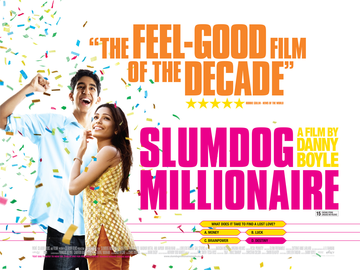It is almost as if, we, as individuals and societies have removed limits and pushed the boundaries in whatever we desire. We seek to explore new and exciting aspects of life (Payne, 2013)
We are ever expanding our knowledge and understanding of an idea, topic or situation relevant within the busy and vibrant world we live in. In a generation accustomed to the screening of imaginary or new experience it is easy to reflect on, and establish a connection with completely different customs.

I have never crossed the boarders into India, nor have I had a great upbringing around the culture, but somehow I have experienced it. Somehow, and by moments carefully strung together, by the genius of another, I have felt deeply connected to a completely different way of life. Vivid and powerful images, honest dialogue and the representation of emotions where all aspects exposed when watching a film like Slumdog Millionaire. This is one of many beautifully crafted, modern ways of expression of culture and allowing different people to experience difference, and truly be influenced. What can be understood as ‘diaspora’, a certain notion of dispersion (Kenny, 2013), or the purpose behind inter-cultural film and media, allows works such as Slumdog millionaire, a film set in and about a journey through India to belong to its culture yet expand beyond. However, there is also the ideology that this occurrence of “Cross-cinema” (Khorana, 2014); ethnic backgrounds merging into the landscape of another culture, manifesting to become hybrid in content and form, they respectively become subject to their stereotype.
Personally, this transnational phenomena, which allows cultures to be expressed, is an incredible achievement which is not necessarily modern, but within cinema, increasingly recognized.
-EJB
Payne, R 2013, ‘Global issues: challenges of globalisation’, in Global issues; politics, economies and culture, 4th edn, Pearson Education, Inc, Boston 1-23.
Khorana, S, 2014, ‘Crossover Cinema: A Genealogical and Conceptual Overview’, In S. Khorana (Eds), Crossover Cinema: Cross-Cultural Film from Production to Reception, Pp. 3-18.
Kenny, K, 2013, 10 things to understand about diaspora, Oxford University Press’s Academic Insights for the Thinking World; http://blog.oup.com/2013/06/10-facts-about-diaspora/#sthash.X1EhP4zT.dpuf